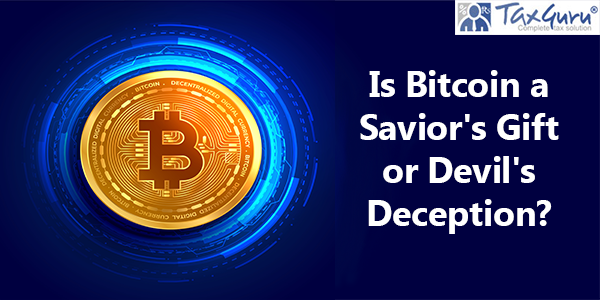#AD
Bitcoin, with its finite supply of 21 million coins, has stirred discussions around price volatility and stability. As we approach this supply limit, questions arise about the cryptocurrency’s future price behavior. So, if you’re thinking about investing in crypto, now is the time to do invest on bitcoin-profitapp.com
Scarcity and perceived value
In the world of finance and economics, the principle of scarcity has always played a pivotal role in determining the value of an asset. Bitcoin, often heralded as a limited asset, is no exception to this rule. The 21 million cap on its supply ensures that, unlike traditional fiat currencies, there won’t be an arbitrary influx of new coins into the market, thereby preserving its rarity.
Historically, gold has been a go-to standard for preserving value, largely owing to its scarcity. While there’s more gold yet to be mined, it’s finite and becomes increasingly challenging to extract, making it a “limited asset.” Similarly, every four years, the reward for mining Bitcoin is halved, making it progressively more challenging to earn new coins and thereby emphasizing its scarcity.
Perceived value is a complex amalgamation of public sentiment, use-case, and trust in the longevity of an asset. While gold’s value has been recognized for millennia due to its tangible nature and varied applications, Bitcoin, being a purely digital entity, relies heavily on its technology and the community’s trust.

Effects of reduced mining rewards on miners and network security
The concept of Bitcoin mining rewards is intrinsically tied to the mechanism by which new Bitcoins are introduced into the ecosystem. Initially, miners were rewarded with 50 Bitcoins for every block they added to the blockchain. However, every 210,000 blocks — roughly every four years — this reward is halved, an event aptly termed as a “halving.” As Bitcoin approaches its predefined supply cap of 21 million coins, these mining rewards continue to decrease, which naturally brings forth concerns regarding miner incentives and the overarching security of the network.
Miners play an indispensable role in the Bitcoin network. Beyond the introduction of new coins, they validate and add transactions to the blockchain, ensuring the system’s decentralization and security. The energy and computational power required for mining activities are substantial, and the rewards they receive are their primary incentive to continue these operations. As these rewards diminish over time, there’s a potential economic challenge: will miners continue to find it profitable to maintain or even increase their computational power, given the declining block rewards?
If, hypothetically, a significant proportion of miners decided that the reduced rewards no longer justified their efforts and expenses, and subsequently reduced their computational power or exited the network entirely, it could leave the Bitcoin network vulnerable. Reduced overall hash power would mean that the network is easier to attack, potentially allowing malicious entities to execute a 51% attack, where a single entity controls more than half of the total network power.
Potential for price stability post limit being reached
The genesis of Bitcoin brought forth a revolutionary digital asset with a finite supply. Limited to a total of 21 million coins, the cryptocurrency’s design inherently introduced the prospect of scarcity. This imposed scarcity, combined with the ever-increasing demand, has largely contributed to Bitcoin’s notable price volatility over the years. However, the underlying question remains: what happens to Bitcoin’s price stability once the entirety of this supply has been mined and the 21 million limit is reached?
Historically, assets with limited supply, be it gold, land, or even rare collectibles, have seen price stabilization upon reaching a saturation point in their availability. As the supply of Bitcoin dwindles with each mined block, and as we inch closer to its eventual supply cap, one could argue, based on traditional economic theories, that the diminishing inflation rate of new Bitcoins entering the system would naturally lead to reduced price volatility.
Bitcoin is mined, its widespread adoption, both as a store of value and potentially as a medium of exchange, will be instrumental in dictating its price. If Bitcoin achieves a global status akin to “digital gold,” with widespread institutional backing and general public trust, the demand-side factors might stabilize, leading to more predictable and less volatile price movements.
Furthermore, once the supply limit is reached, the primary economic incentive for miners will transition entirely from block rewards to transaction fees. This shift could introduce a new dynamic in the transaction costs associated with using the Bitcoin network. While it’s speculative, higher transaction fees might act as a deterrent for short-term speculative trades, further reducing price volatility by encouraging longer-term holding and usage.
Conclusion
Reaching Bitcoin’s supply cap brings with it potential for greater price stability, influenced by evolved demand dynamics and transactional economics, signaling a new phase in its market journey.
*****
Disclaimer: Crypto products and NFTs are unregulated and can be highly risky. There may be no regulatory recourse for any loss from such transactions. Cryptocurrency trading involves high risk, and is not suitable for all investors. Before deciding to trade cryptocurrencies, tokens or any other digital asset you should carefully consider your investment objectives, level of experience, and risk appetite. TaxGuru does not recommend that any cryptocurrency should be bought, sold, or held by you. Do conduct your own due diligence and consult your financial advisor before making any investment decisions. By the use of the above information, you agree that Author / TaxGuru is not responsible or liable in any manner for the authenticity, accuracy, completeness, errors or any kind of omissions in this piece of information for any action taken thereof.




